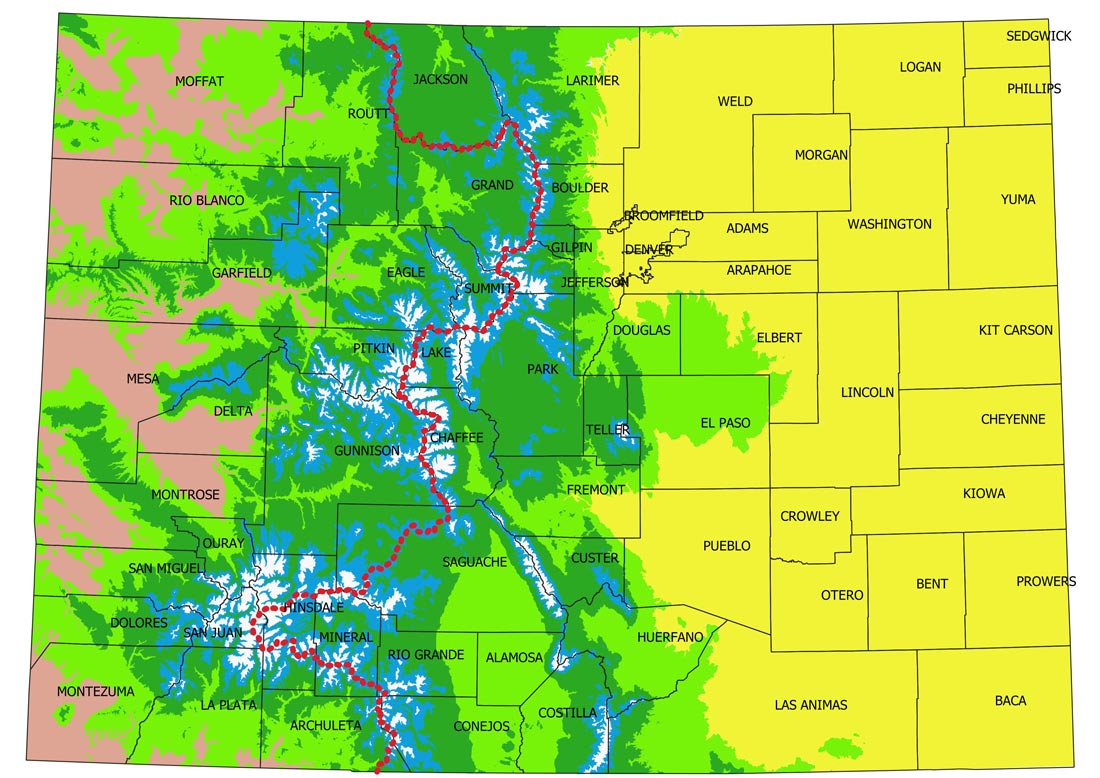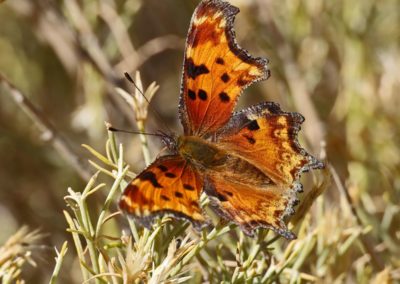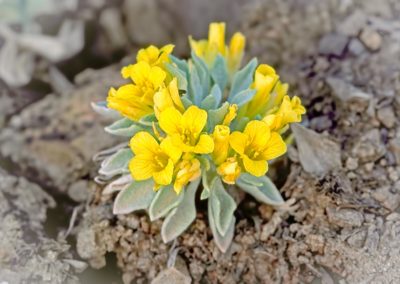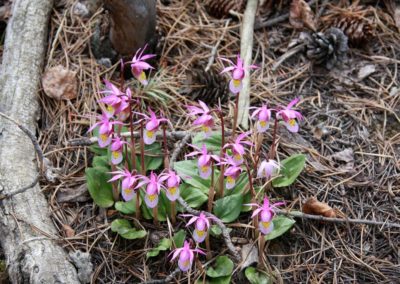Flowering Plants of Colorado
Plants by Life Zone
What are Life Zones?
One of the reasons that Colorado plants and habitats have such a diverse flora is that our state has six altitude life zones. According to the Merriam Webster Dictionary, a life zone is defined as being “a region characterized by specific plants and animals.” In Colorado our life zones occur primarily, but not completely, because of our vast variation in altitude. Our lowest point is 3,315 feet on our eastern border where the Arikaree River crosses into Kansas. Our highest altitude is on Mount Elbert, at 14,433 feet, 12 miles southwest of Leadville in Lake County.
Our life zones do not only occur because of altitude, however, but also because of annual precipitation. The change in flora due to altitude is visually evident as you climb from the plains to the alpine.
Colorado Altitude Life Zone Map

Native Plants
Alpine Plants
Altitude: 11,500′ – 14,433′
Subalpine Plants
Altitude: 10,000′ 11,500′
Foothills Plants
Altitude: 6,000′ – 8,000′
Montane Plants
Altitude: 8,000′ – 10,000′
Plains Plants
Altitude: 3,315′ – 6,000′
(East Slope)
Semi-desert Shrubland Plants
Altitude: 4,336′ – 6,000′
(West Slope)
Non-native Plants & Noxious Weeds
Introduced Plants
Noxious Weeds
Special Collections
Click the tabs below to select category.




